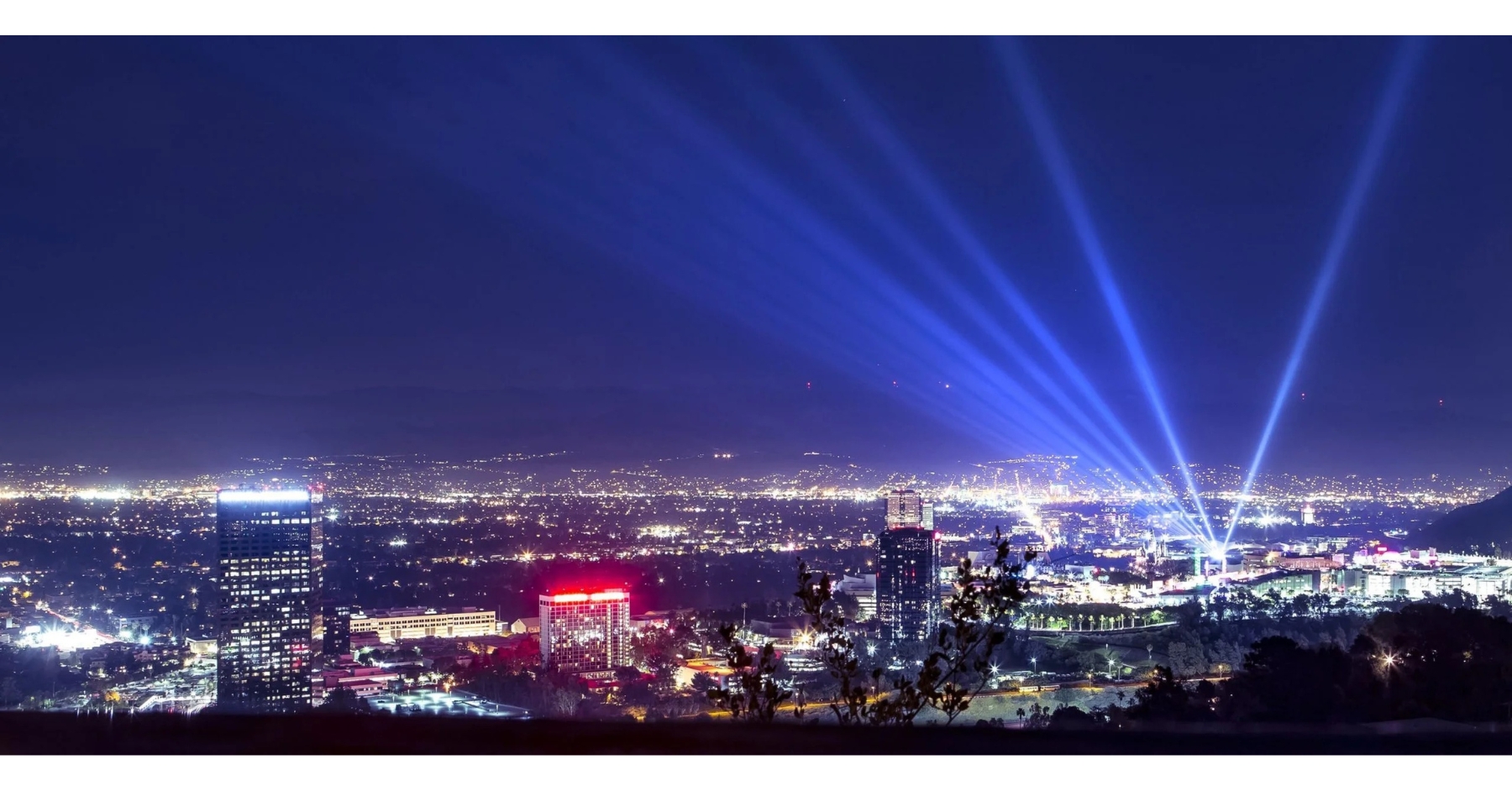When working on a new project, you’re probably thinking about a whole host of things, from deadlines to budgets. But have you considered that your application could be shot down by the local planning authority if you haven’t thought about lighting design?
For example, there’s no question that sports pitches make a great addition to local communities. These outdoor facilities encourage kids to be active, offer a recreational space for friends and families and do a great job at bringing people together when the big game rolls around.
However, like any project, these facilities come with several lighting-related risks.
Nobody can play football in the dark, so the lights around sports pitches must be super bright (or, in industry terms, have high lumen packages).
You don’t have to be an expert to know that intense, prolonged light can be a nuisance to surrounding areas — meaning you’re unlikely to gain approval without appropriate measures to prevent the lights from becoming an issue.
So, before you submit your project for planning approval (whether that be a sports facility, new highway, car park or any other kind of exterior lighting), you’ll want to ask yourself a few questions and carry out a thorough lighting impact assessment…
HOW WILL NEARBY RESIDENTS FEEL?
How much disruption your project’s lighting will cause depends on its location.
Lights near people’s homes can keep residents awake, and poor sleep can cause stress and a lack of productivity, not to mention a long list of potential health problems. They don’t even have to be excessively bright, either — blue light (yes, the same kind that comes from your electronic devices) can disrupt the natural circadian rhythm and throw people’s sleep cycles out of whack.
To put residents’ concerns over sleeplessness to rest and ensure your project gets approval, you should carefully consider the positioning of the installation. For example, if you can’t dim the light, you could point fittings downwards so that the light is directed only where it’s needed. You could also think about implementing ambient lighting solutions, where only lights with a warmer hue are used in the evenings.
AND WHAT ABOUT LOCAL WILDLIFE?
If you think there are issues with lighting keeping nearby residents up, just wait until you hear about the potential impact on local wildlife!
Bright light disrupts the dark in animal habitats, messing with the routines of nocturnal and light-averse species like bats. Not only will these animals be unable to sleep, but lights can also reduce foraging time — with these creatures missing the peak time for insect hunting (just after dusk). Unsurprisingly, insomnia and lack of food are no good for bat conservation efforts.
What’s more, shiny surfaces can reflect nearby lighting, causing birds to mistake solid objects for bodies of water — resulting in fatal collisions (also bad for conservation efforts).
Thankfully, there are a few things you can do to ensure your project won’t harm wildlife and help get the planning approval authority on your side.
Lux levels can be reduced easily with dimmer switches. And here’s something clever: you can even time the lights to dim in line with migration patterns to avoid disrupting flight paths. However, care must be taken to ensure light levels don’t drop below whatever is deemed safe for the installation site.
WILL THE PROJECT MESS WITH THE SKY?
An issue that’s common in urban areas but especially problematic in rural areas is ‘sky glow’.
This issue occurs when light shines into the sky, illuminating things like air molecules, dust particles and water droplets. Sky glow is as unsightly as it sounds — causing the night sky to appear lighter and polluted: a no-go for planning approvals.
As you can imagine, sky glow can ruin the crystal-clear, star-peppered night skies synonymous with the countryside, introducing an unwanted suburban feel to these locations. If your project will be situated in an area of outstanding natural beauty (AONB), like a national park, then you’ll have to meet specific regulations to prevent sky glow.
Fortunately, there are a number of things you can do to keep your lighting away from the sky and ensure you secure planning approval — namely concerning the placement of the lighting installations.
By concentrating the lighting only where it’s needed, like in entrances, walkways and anywhere that’s not a vast expanse of picturesque rolling hills, you can ensure the right places are illuminated (and save costs on wasted fixtures, too!). When producing the lighting design for the innermost parts of the project, you can also try to situate lights where they’ll be shielded by nearby buildings — making sure they’re not visible from a distance.
HOW DOES IT MEASURE UP SUSTAINABILITY-WISE?
We couldn’t talk about gaining approval for a new project without mentioning sustainability — it’s one of this year’s hottest topics, with everyone thinking of ways to reduce their environmental impact amidst the climate crisis.
Sustainability also goes hand in hand with economic concerns, which have become a top priority amidst skyrocketing energy prices, meaning it’s bound to become even more important in the coming years.
Gone are the days of inefficient, costly incandescent and fluorescent lights. New regulations are always coming into play to ensure lighting designs come with minimal environmental impact.
For instance, the new BS 5489 standards recommend you opt for smart lighting solutions like adaptive lighting, where sensors can detect conditions at the installation site and change the lighting based on them. One example of this technology lies within motion sensors, which identify when there’s a person moving past and trigger lights to turn on to help guide pedestrians, prevent crime and keep communities safe.
And, of course, we always recommend that you choose the most environmentally friendly solutions, like LEDs (which use around 80% less energy than traditional alternatives!).
We’re letting you in on a secret here, but getting a lighting impact assessment is a surefire way to identify potential obstacles to planning approval. Our experts have worked on lighting designs in a range of locations — from car parks and city centres to AONB — and would love to help with your next project. Just get in touch via info@dfl-uk.com or call +44 (0)1962 855080!























